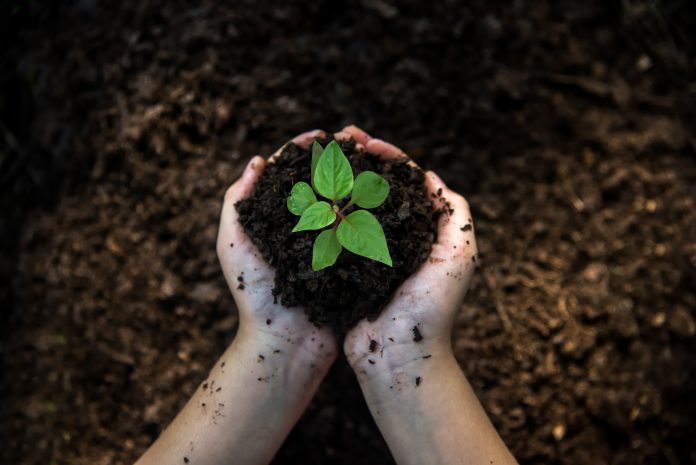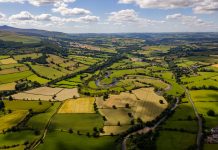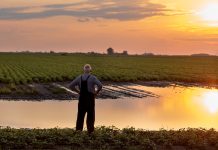Here, we speak to Assistant Professor of Soil Health Christine Sprunger, who gives us expert insight on the universal need for soil health
When it comes to questions of climate change, food security is often one of the most well-discussed issues. In the wake of recent violence, global conversations are centring around access to certain crops.
It is common knowledge in some parts of the world that extreme weather systems directly shape the ability to grow food – but soil health is also at the heart of the issue. Soil can also function as a carbon sink, which makes it especially intriguing to scientists.
Firstly, do you think that the ongoing COVID-19 pandemic had a significant impact on agroecosystems?
“This is an important but complex question. In January 2021, we interviewed Ohio farmers and asked how Covid was impacting their operations. About 90% of farmers said that COVID-19 had zero impact on their operations, with about 10% stating that they had started to see supply chain issues on their farm or difficulty accessing rental equipment for their farm.
“However, I want to stress that this was a small sample size in one region within the United States. Now that we are halfway through 2022, scholars around the world have been able to conduct extensive research on how COVID-19 has impacted agroecosystems worldwide. This is outside my area of research but many scholars including Baffoe-Bonnie et al., (2021) and Boerngen and Rickard, (2021) note that the COVID-19 pandemic has shed light on unequal access to the internet due to inadequate broadband availability in rural communities.
“Pre-covid, soil scientists, agronomists, and extension educators have relied on in-person conferences to communicate with farmers on emerging research within agriculture. The scholars mentioned above state that COVID-19 reduced communication and adult education opportunities for farmers in the United States due to inadequate broadband availability.
“More broadly, I think the delayed impact of COVID-19 on agroecosystems likely has to do with supply chain issues and market value but again this is not my area of expertise.”
Secondly, when it comes to soil health and greenhouse gas emissions, you mention that you’re working on improving carbon sink capacity. What can you tell us about that?
“Soil health and soil carbon are intricately linked. Soil carbon drives biological, chemical, and physical processes in the soil, and when enhanced, this directly benefits soil health. Additionally, soil has the capacity to store two times more carbon than the atmosphere. Thus, if carbon storage increases within a given soil, then there is less carbon in the atmosphere. For this reason, many soil scientists (including myself) are interested in quantifying soil health from the perspective of soil carbon sequestration and climate mitigation.
“One way that my lab examines soil carbon is by comparing carbon across a range of soil health promoting practices. Examples of soil health promoting practices according to the U.S. Natural Resource Conservation Service that ‘soil health promoting practices are those that increase soil organic matter inputs, increase soil biota by diversifying plants in a rotation, extend year-round cover to prevent erosion, and consists of living root throughout the year.’
“In a recent publication in Agriculture and Environmental Letters (Sprunger et al 2020), we report results from a study that compared a series of soil health promoting practices including annuals grown in rotation with a cover crop, perennial monoculture systems, and perennial polyculture systems. We found that both perenniality and plant biodiversity are critical for increasing soil carbon. Perennial polycultures have an advantage to building soil C because of their extensive roots and more diverse soil food webs. Taken together, these mechanisms enhance soil C pools and promote soil carbon sequestration. Another noteworthy finding is that even amongst the annual systems, diversity played an important role.
“For instance, corn grown in rotation with soybeans + cover crops had significantly greater carbon than those found in continuous corn systems. The take home message here is that soil health promoting practices including perenniality and plant diversity are critical for enhancing soil health and have implications for long-term soil carbon storage.”
Third, reflecting on the connection between soil and the climate, what do you predict will happen to global agroecosystems if left alone?
“In the Upper Midwest, USA, we are already experiencing more frequent extreme weather events. In the spring and summer this means more intensive rainfall events that lead to major flooding followed by periods of drought during the summer. This more erratic weather is already a burden for farmers. It has been reported that flooding reduces crops yields by 34% compared to the long-term yield trend (Li et al., 2019). Moreover, in 2019, the Midwest, USA experienced the wettest growing season on record. This historic event caused massive delays in corn and soybean plantings and in many cases, row crops could not be planted at all due to continued standing water. In the end, 20 million acres went unplanted. This drastically beat the record of unplanted acreage which was previously ten million in 2017. If unchecked, climate change will continue to cause irregular and extreme weather patterns that will make farming more challenging.
“In regards to soil biogeochemical processes and climate change, this is something that many are still working to understand. Research has shown the elevated CO2 and soil warming can alter soil biogeochemical cycles, leading to more loss of CO2 from soils into the atmosphere. Our lab group is currently assessing how things like flooding and drought impact soil health, and even more specifically, soil biota.”
Finally, what did you discover about farmer perceptions of global climate change? Are there any insights you believe would be beneficial for climate strategists, policy-makers and scientists?
“We generally don’t directly ask farmers about perceptions of climate change, more so, we ask them how extreme weather events impact their soil management and farm operations. 50% of the farmers we talk to generally say they are not impacted too badly, and their strategy is to wait to plant until weather conditions improve. The other 50% say that extreme weather events are making them reconsider soil health promoting practices like cover crops and more diverse crop rotations. However, many followed this statement with a question, ‘if I incorporate cover crops will this help alleviate excess moisture?’
“This question is important because there is still a lot of research that needs to be conducted in this space. My colleague Alex Lindsey and I are conducting a project on this very question. We are working to see which cover crops are most effective at alleviating excess moisture prior to corn planting. The message to policy makers is that it is important that agencies continue to fund research in soil health and climate change so that we can address important scientific questions that have practical implications for farmers.”
Why are nematodes so important in the soil health framework?
“My lab has recognised an important need in developing nematodes as a potential soil health indicator. In general, most soil biological health indicators reflect the activity of the microbial communities but do not directly measure soil organisms. This is problematic given how instrumental soil biota are at influencing soil health. In recent years, my lab has proposed incorporating beneficial nematodes into the soil health framework. Beneficial nematodes serve as important organisms within the soil food web due to the variety of feeding types, those that feed on bacteria, fungi, plant roots, and carnivores that feed on each other. Nematode indices, developed by famous nematologists, Ferris et al., (2001) are derived from nematode identification and can provide important inferences to nutrient cycling, ecosystem disturbance, decomposition pathways, and community complexity. Despite the important information that can be collected, nematode indices have largely been excluded from the soil health framework because of the specialisation required for identification through microscopy.
“Our group has made important advances in nematology by working to assess how nematodes are related to other soil biological health indicators (see Martin et al., 2022).”
Please note: This is a commercial profile.
© 2019. This work is licensed under CC-BY-NC-ND.












I’d like to get one of the science kits, such as the skeleton model, for kids to investigate, and the microscope is now on my wish list as well!